Exploration into material, form, and process drives Joan Tanner’s donottellmewhereibelong, an exhibition of the artist’s drawings and sculptures made during the last three decades, currently on view at the University of Louisville’s Cressman Center for Visual Arts. Tanner, who was born in Indianapolis but has lived in California since the 1960s, is dogged in her pursuit of spatial inconsistencies, visual ruptures, and structures that are at once architectonic and organic, often breaking from conventional perspective. She is seemingly unconcerned with aesthetic appeal, and the objects she creates can be compositionally unbalanced or rudimentary in nature.
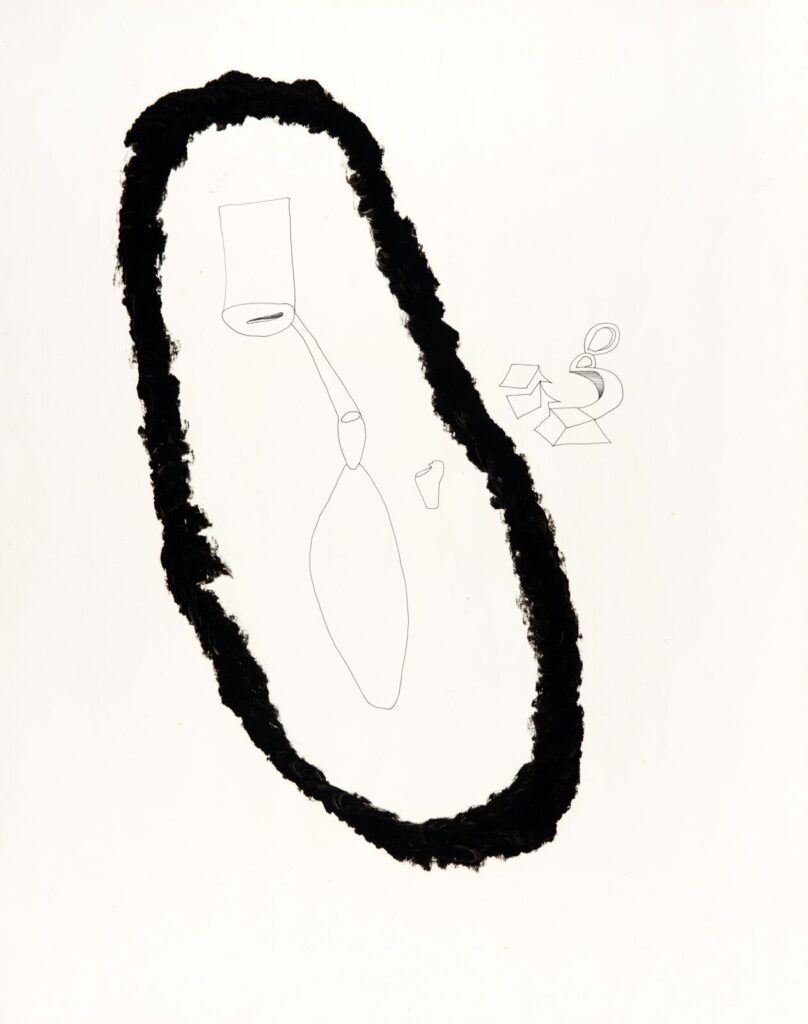
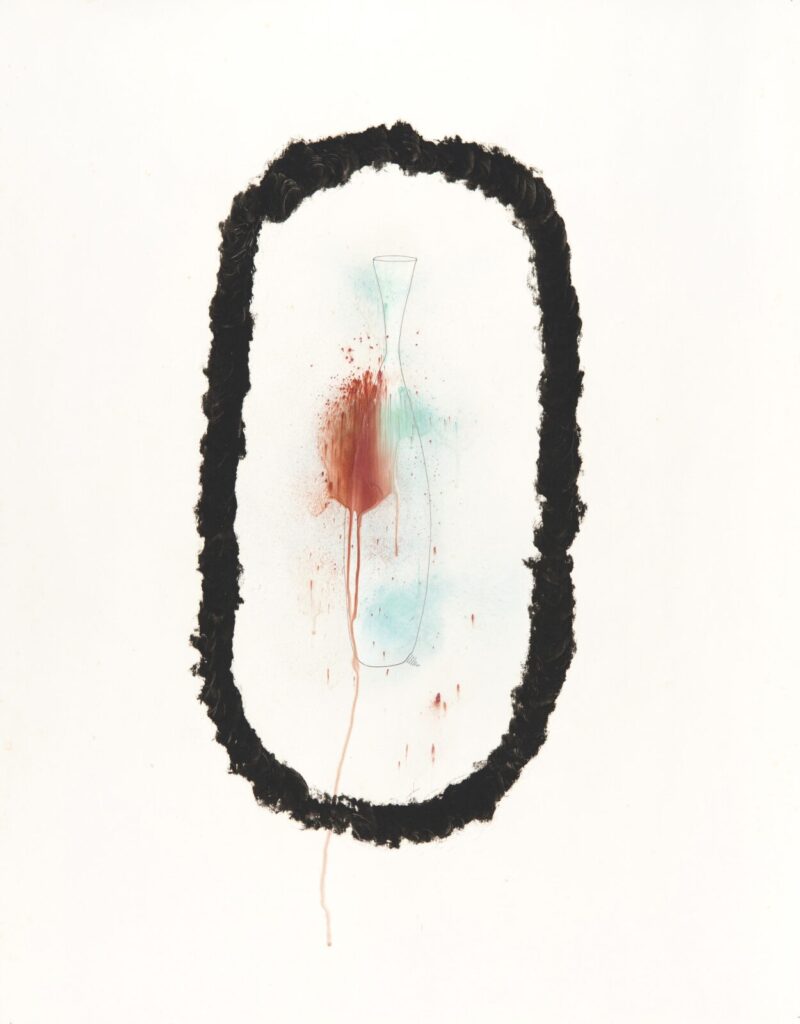
In a range of four numbered drawings entitled Drawing Focus, thick rings made with an oil stick envelop smudges of earth tones and line drawings of vessels, some of which are incomplete. Drawing Focus #2 (1999) contains an elongated vase whose body is interrupted by a dripping blotch of sienna, powdered throughout by a pale turquoise. An opaque black oval has been padded around the vase, its structural integrity unsettled due to the irregular manner of its application. Here, Tanner investigates the limitations and inherencies of her selected media and, especially in works such as Drawing Focus #1, assesses to what extent spatial relationships can be stressed before they read as incoherent.
Tanner’s probing of process and material continues in a series of drawings carrying the exhibition’s namesake, standing as opportunities for the artist to identify and translate concepts, combining architectural and scientific forms that effectively distort vantage points and create perceptive disarray.Â
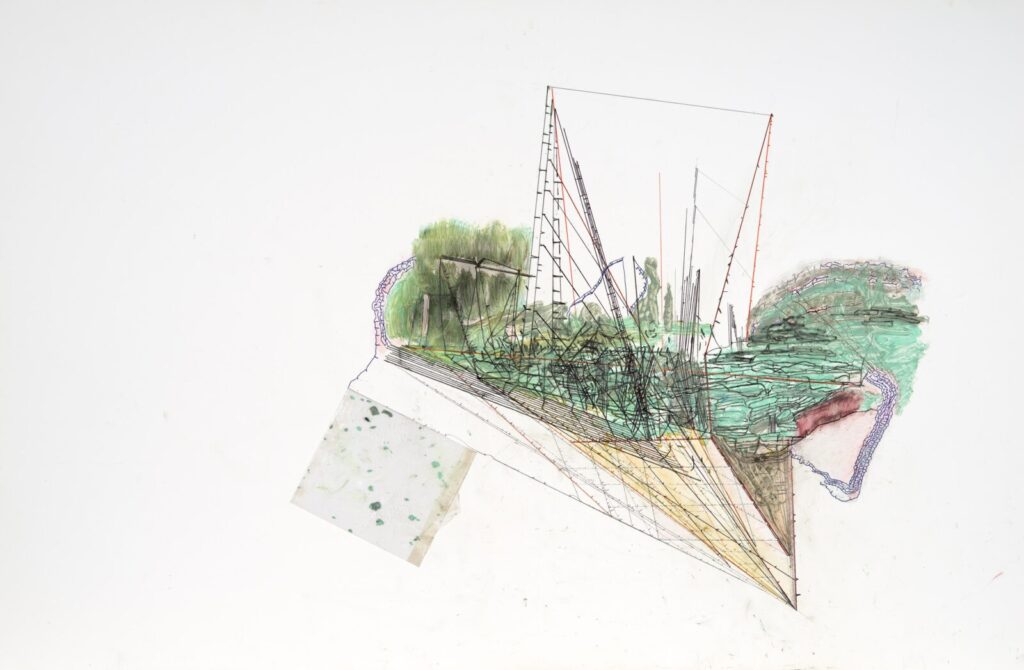
Such is the case in donottellmewhereibelong #19 (2014), a multi-perspective diagram populated with an assortment of browns, blues, and greens that invoke landscapes of the American west. The drawing is strikingly topographic, though viewers may find it difficult to determine if donottellmewhereibelong #19 provides an aerial or frontal viewpoint; it may not matter—Tanner provides enough incongruity for drawings such as this to operate abstractly.
With her materials as guide (the work is listed as a cellophane collage), Tanner transforms the empirical into the whimsical, the geometric into the organic. Moreover, works comprising the donottellmewhereibelong series—which can resemble charts, blueprints, or layouts—invariably map Tanner’s wrestling of ideas and the processes she undergoes to describe them.
donottellmewhereibelong is curated by Julien Robson, who has known Tanner for nearly 30 years and has worked with her on multiple projects, including a solo show of Tanner’s work at the Speed Art Museum in 2001 as well as an interview for the catalog accompanying On Tenderhooks at the Otis College of Art and Design’s Ben Maltz Gallery in 2006.
In the interview, Robson wonders to what degree Tanner’s practice is informed by political positions, to which Tanner replies such inquiries are not “off-base, but posturing a moral or political stance is not [her] intention.†If anything, Tanner maintains undertones of pacifism, as the objects in donottellmewhereibelong are subtle in the ways in which they critique the detrimental characteristics, irreversible ramifications, and destructive nature of global capitalism.
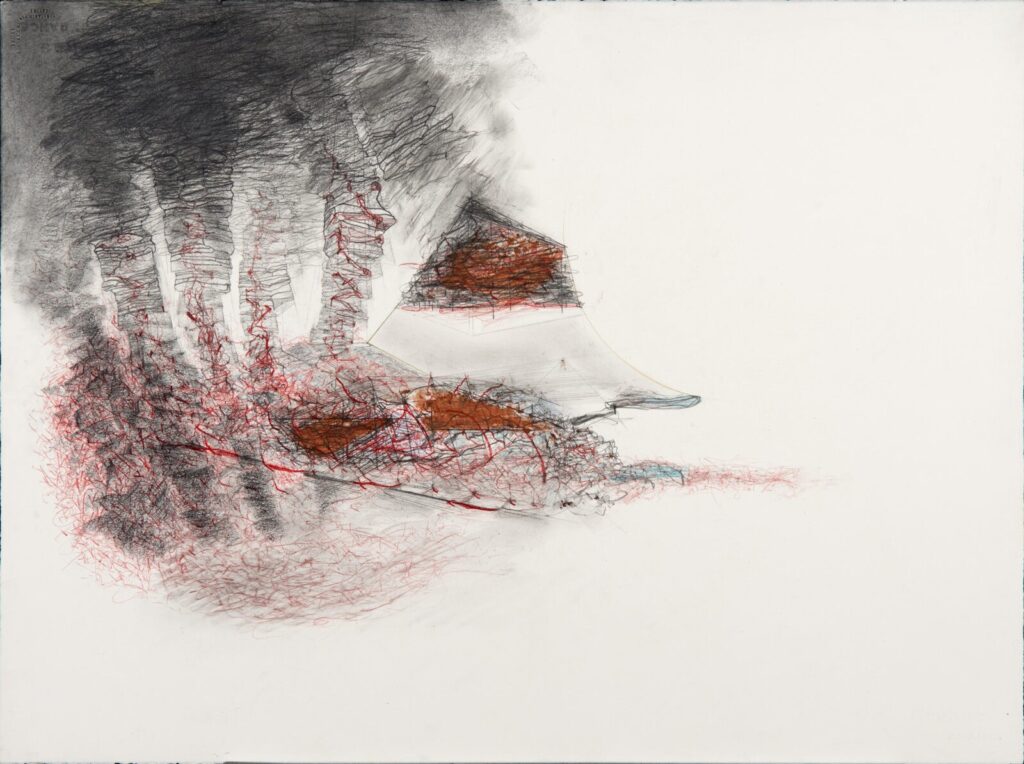
By depicting an abstracted power plant—complete with five smoke stacks emitting an impenetrable fog—in donottellmewhereibelong #15 (2014), Tanner draws attention to environmental decay and the tangible sites spearheading climate change that are, for many viewers, frequently omitted from everyday life. In this drawing, the artist employs murky gray tones and deep crimsons to suggest harm that is both contaminating and corporeal, yet terse sections of blue imply that Tanner maintains optimism regarding humanity’s ability to correct course.
Containing some of the more overt, singular subject matter in the exhibition, donottellmewhereibelong #15 possesses a formal connection with other drawings in the gallery through the layering of various media, contradictory perspectives, and structures—in this case, the smoke stacks—that resemble geological formations above all else. Although Tanner admits that her works are not designed to function politically, it may be likely that her social, economic, and cultural tendencies seep into her creative processes. In donottellmewhereibelong, this occurs in disparate ways.
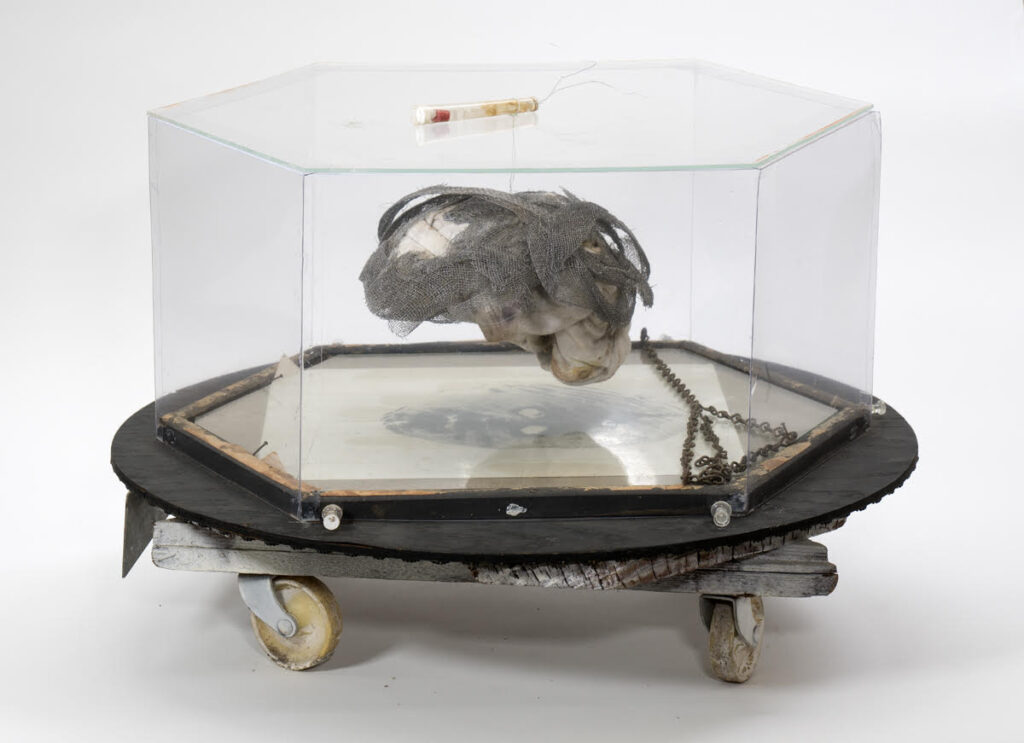
Indeed, political implications can be inferred at numerous points in the exhibition. In each instance, Tanner retains a pacifist demeanor. Screen Hat (1990-2010), a small found object sculpture of headwear floating above a two-dimensional rendering of a face, can be framed as an imagined post-apocalyptic scene. The sculpture’s parts are unclean and corroded, as if they had been pulled from the remnants of a fire or combat.
By assembling these incongruous parts into a unified form, she removes them from the meaning they may have once had. More palpably, violence is recalled in a visceral sense by certain components and the ways in which they are attached: thumb tacks puncture the sculpture’s base, nails drive into the wooden frame, a chain bears down upon the face, and a metal screen spurs from atop the hat.
Screen Hat operates as both an index and representation of destruction, as well as a moment to reflect on the consequences of a world order fueled and sustained by invasion, war, and physical dominance. Moreover, the sculpture is anchored to four wheels, insinuating that violence and the forces that extrude it are capable of mobility.
Destruction is a thematic thread in donottellmewhereibelong, albeit not always in a manner relating to discerned subject matter. After all, Tanner states in the 2006 interview that she believes “we are hard-wired toward received perceptions, impressions, and readings of the world.†Instead, as Tanner allows her work to inform itself, the destructive moment in the process becomes a focal a point. Tanner embraces the collapse of utility, formal composition, and connotation. It is as if her exploration of material and form portends a breaking down, anticipating the erosion of deduced meaning.
As a result, donottellmewhereibelong consists of familiar shapes and objects that have gained any number of possible contexts. Viewers are able to apply their own experiences in interpreting what Tanner has created, which perhaps centers their imagination as the primary focal point of the artist’s work.
The exhibition is on view through October 27th at The Cressman Center Gallery located at 100 East Main Street in Louisville.
Hunter Kissel is an arts administrator, writer, and curator based in Louisville, KY. He received a Master of Art in Critical and Curatorial Studies as well as a Master of Public Administration from the University of Louisville in 2017.




